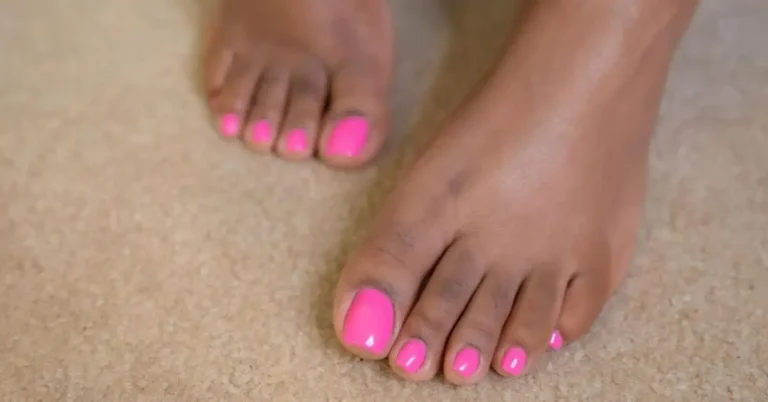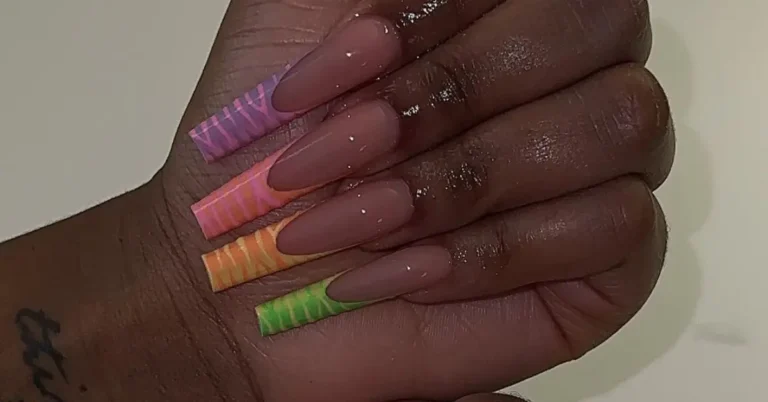Feeling uncomfortable with your new acrylic nails? Discover the reasons why you’re asking, “Why do my acrylic nails hurt?” and find out strategies to ease the discomfort for a better nail enhancement experience!
Why Do My Acrylic Nails Hurt?
Causes of Discomfort
When you say, “My acrylic nails hurt,” it’s usually due to pressure on your nail beds. This can happen if the acrylic nails are applied with too much force or too long, creating a lever-type effect every time you use your hands. The discomfort might also result from an overly aggressive nail preparation process, where the natural nail is filed down more than necessary, leading to soreness and sensitivity.
Reactions to Chemicals and Materials
Sometimes, the materials used to create stunning nail extensions can be the culprits. You could be experiencing an allergic reaction to the chemicals in the acrylic mixture. Low-quality products may contain substances that increase the risk of irritation, so it is essential to ensure that your nail technician uses reputable products. Remember, nail hygiene is paramount!
Physical Effects on Natural Nails
Applying acrylic nails involves adhering a heavy, rigid material to your natural nails, which can sometimes lead to discomfort or even injury to the nail bed. Nails that are weak or thin to start with are particularly vulnerable. Excessive or too much filing during the application results in nail discomfort; therefore, the nail preparation technique must be gentle to minimize potential damage to your natural nails.
To mitigate the pain and maintain the health and beauty of your nails, always opt for a skilled nail technician and don’t hesitate to speak up during the process to ensure your comfort is prioritized.
Preventing Issues with Acrylic Nails

Choosing the Right Nail Technician
Find a nail technician with a reputation for both skill and hygiene. Your nail technician should have a good track record, be certified, and take time to address any concerns you have. Remember, a experienced professional will be less likely to cause issues like over-filing or improper application, which can lead to pain or infection.
Optimal Nail Preparation and Care
- Prepare your nails properly to prevent issues:
- Start with clean hands to avoid fungal infections.
- Gently buff nails, avoiding excessive buffing which can lead to thin, weak nails and discomfort.
- Use high-quality acid nail primer to prevent lifting and reduce the risk of allergies.
Proper nail care doesn’t end at the salon. At home, use moisturizers to keep cuticles healthy, and if you notice any itching or discomfort, do not hesitate to contact your nail technician for support.
Using Quality Products and Techniques
- Ensure only the best products and techniques are used:
- Request nail glue and acrylic products that are free from harsh chemicals.
- Discuss the size and shape of the nails beforehand; overly long or improperly shaped nails can cause undue pressure and breakage.
- Insist on a technique that avoids a broken nail or nail bed injury.
Treatment and Relief for Acrylic Nail Pain

Identifying Allergic Reactions
Allergic reactions to the chemicals used in acrylic nails, like methacrylate compounds, can cause pain or discomfort. Symptoms might include redness, itching, or swelling around your nails. To confirm an allergic reaction, consider new sensations after your nail appointment and compare them with common allergy indications. If your symptoms align, removing the acrylics and steering clear of the allergen will be necessary to stop the pain.
Home Remedies and Pain Relief
Simple home treatments can be very effective for minor pain relief from acrylic nails or to soothe a nail snag. Start by:
- Soaking your nails in warm soapy water mixed with Epsom salt to reduce swelling and alleviate painful sensations.
- If you have a cracked acrylic, carefully filing away any sharp edges can prevent further injury to your natural nails.
- To address small infections or bacterial growth, keep your nails clean and try applying an over-the-counter antifungal cream, especially if you suspect a fungal infection is at play.
Always ensure the tools you use are sterilized to prevent causing more harm than good.
When to Seek Professional Help
If home remedies aren’t relieving your pain, or if infections appear to worsen, it’s time to visit a professional. Persistent pain, especially if accompanied by pus or severe inflammation, might indicate a more serious infection that requires medical treatment. Don’t hesitate to return to your nail salon or see a healthcare provider if you cannot resolve the discomfort on your own—mainly to avoid any adverse reactions that could affect your nail health long-term.
Frequently Asked Questions

How can I ease the discomfort from new acrylic nails?
If your new acrylic nails are causing discomfort, soaking your nails in warm water can help. This process can alleviate pain by reducing swelling and pressure on your nails. Using over-the-counter pain relief or applying cold compresses are also effective methods to reduce the sensation of pain.
What causes my acrylic nails to throb with pain?
Acrylic nail pain often results from excessive filing, incorrect application, or harsh chemicals. An acid-based nail primer might also be the culprit, as it can create tiny abrasions in your nail plates that can cause a throbbing sensation.
Can acrylic nails hurt after several weeks? What’s the reason?
Yes, it’s possible to feel pain after several weeks, which might indicate that your acrylics are lifting, causing moisture to get trapped and possibly leading to an infection. It might also mean that your nails have grown out, and the weight is causing stress on your nail beds.
What’s the duration of sensitivity after acrylic nail application?
Usually, any sensitivity from the acrylic nail application should subside within 24 hours. If the discomfort lasts longer, it could be a sign that the nails were applied too tightly or that there’s an allergic reaction to the materials used.
How do I prevent my acrylic nails from causing pain?
To prevent pain, ensure that a professional applies your acrylic nails and that they aren’t too long or too tight. Be vigilant about maintenance and go for regular fills to avoid lifting. Also, treat your nails gently to avoid accidental breaks or splits that may cause pain.
After removing acrylic nails, why do they feel sore?
Post-removal soreness may occur due to the removal process itself, particularly if the acrylics were pried off instead of being properly soaked in acetone. It’s important to be patient and allow your natural nails to recover after acrylic nails removal, and consider giving them a break before the next application.
How do I stop my acrylic nails from hurting?
To stop acrylic nails from hurting, avoid putting pressure on them, keep them dry, and if pain persists, consult a nail technician to check for improper application or infection.
Why does my nail hurt when I put pressure on it?
If your nail hurts when pressure is applied, it could be due to injury, infection, or a too-tight acrylic nail.
Why does it burn when I put acrylic on my nails?
Burning sensation during acrylic application can result from the acrylic mixture being too strong or an allergic reaction.
Do acrylic nails hurt your real nails?
Acrylic nails can hurt your real nails if improperly applied, removed, or if you neglect proper nail care and maintenance.
If you liked this blog article about the question “Why Do My Acrylic Nails Hurt”, don’t forget to leave us a comment down below about what you think of the article and whether it inspired you.





